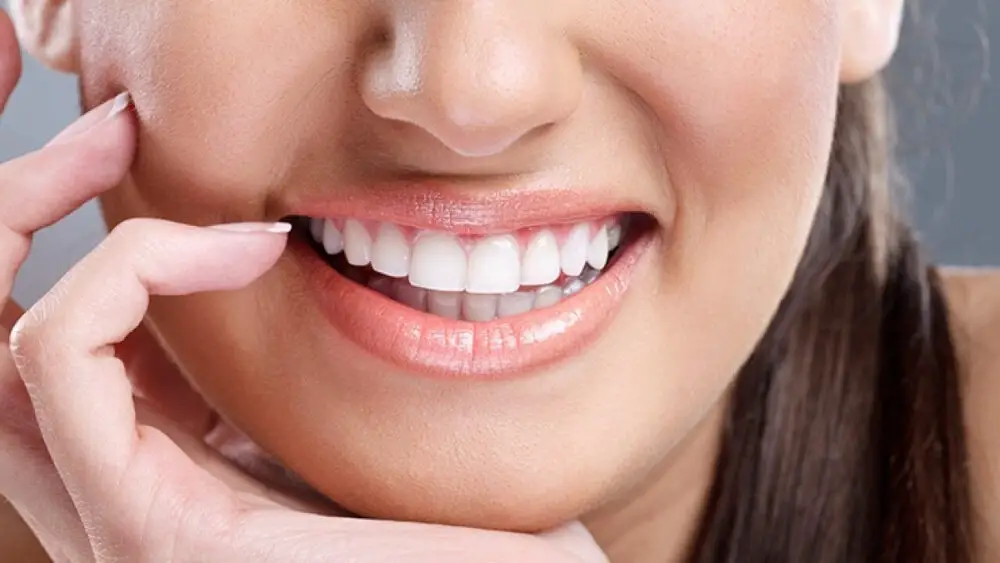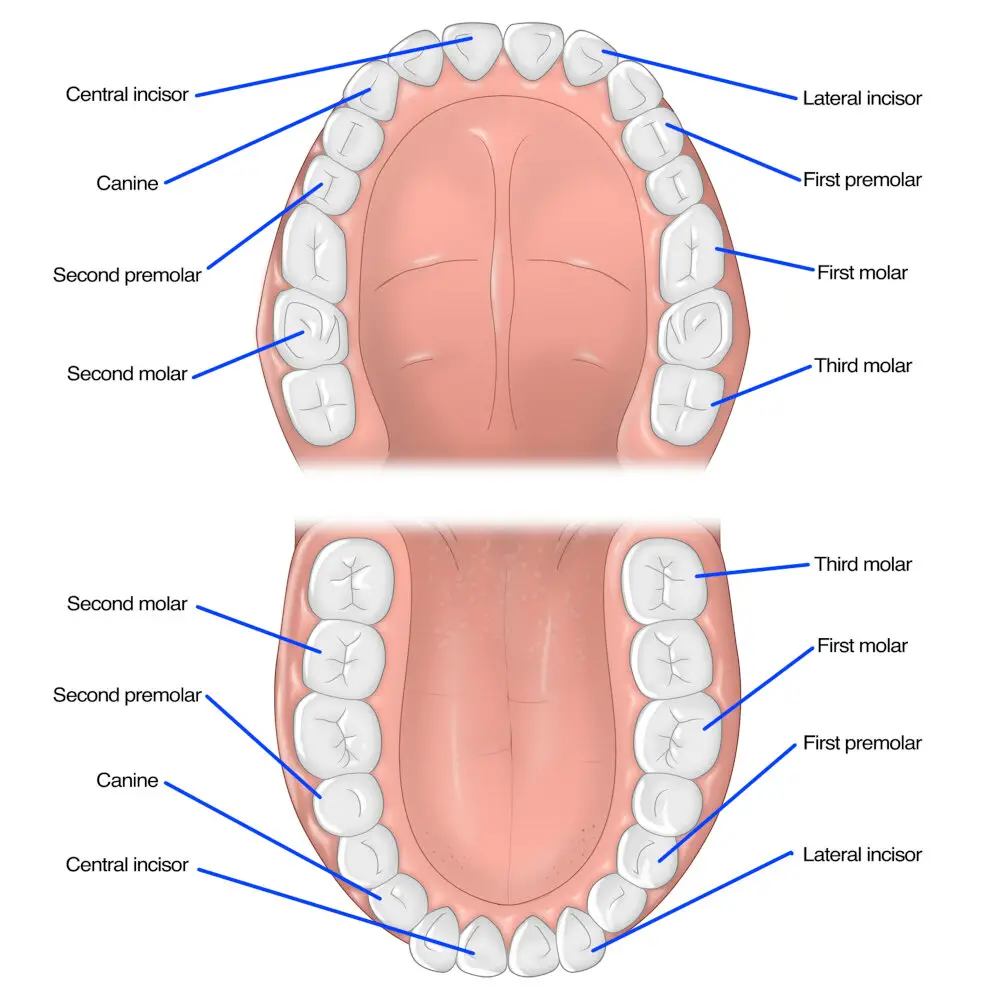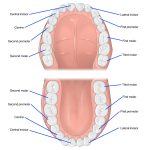10 Simple Ways to Whiten Your Dog’s Teeth: A Comprehensive Guide

Your furry best friend deserves to have a bright and healthy smile just like you do. Unfortunately, many pet owners overlook the importance of dental care for their dogs, which can lead to serious health issues in the long run. A lack of dental hygiene can cause bad breath, tooth decay, gum disease, and even organ damage. However, with a little effort and some simple techniques, you can keep your pup’s teeth pearly white and prevent dental problems. In this comprehensive guide, we will explore 10 easy and effective ways to whiten your dog’s teeth. From daily brushing to natural remedies and dental treats, we will cover a range of options that suit different preferences and budgets. You will learn how to choose the right toothbrush and toothpaste for your dog, how often to brush their teeth, and what signs to look for to identify dental issues. Whether your dog is a puppy or a senior, these tips will help you maintain their dental health and keep them happy and healthy for years to come.
Dental hygiene is vital for dogs as it not only prevents bad breath but also ensures overall health and well-being. Neglecting oral care can lead to periodontal disease, which can cause pain, tooth loss, and even organ damage. Regular brushing with a dog-specific toothbrush and toothpaste, along with providing dental chews and proper nutrition, can help maintain good oral hygiene. Additionally, scheduling regular dental check-ups with a veterinarian can detect any dental issues early on and prevent serious health problems in the future. By taking care of your dog’s teeth, you can help them live a long, healthy life full of wagging tails and happy smiles.
Teeth whitening is an important aspect of dental hygiene for both humans and dogs. A bright, white smile not only looks good but also indicates clean and healthy teeth. Yellow or brown teeth can be a sign of poor oral hygiene, which can lead to gum disease, tooth decay, and bad breath. Regular teeth cleaning and whitening can prevent these problems and improve the overall health of your dog’s mouth. Additionally, having clean, white teeth can boost your dog’s confidence and make them more comfortable in social situations. It is important to incorporate teeth whitening into your dog’s dental care routine to maintain their oral hygiene and keep them healthy and happy.
There are several common causes of yellow teeth in dogs that pet owners should be aware of. Poor oral hygiene is perhaps the most common cause, as this can lead to the buildup of plaque and tartar on the teeth. Additionally, certain foods and treats can contribute to tooth discoloration, such as those that are high in sugar or artificial colors. Age is also a factor, as older dogs are more prone to yellowing teeth due to natural wear and tear. Finally, certain health conditions and medications can cause teeth to yellow, so it’s important to consult with a veterinarian if you notice sudden discoloration. By identifying the underlying cause of yellow teeth, pet owners can take steps to whiten their dog’s teeth and improve their overall oral health.
Ways to Whiten Your Dog’s Teeth

Keeping your dog’s teeth clean and healthy is important for their overall well-being. One aspect of dental care for dogs that is often overlooked is teeth whitening. Just like humans, dogs can develop yellow or brown stains on their teeth due to factors such as aging, diet, and genetics. Fortunately, there are several ways to whiten your dog’s teeth at home. One way is to brush their teeth regularly with a dog-specific toothpaste that contains enzymes to break down plaque and tartar. You can also use a mixture of water and baking soda to create a paste for brushing your dog’s teeth. Another effective method is to provide your dog with chew toys or dental treats that help to scrape away plaque and tartar. Look for products that are specifically designed to whiten teeth, or contain ingredients like parsley or mint that help to freshen breath and fight bacteria. In addition to brushing and providing dental treats, there are other natural remedies that may help to whiten your dog’s teeth. One option is to add a small amount of coconut oil to your dog’s food or water. Coconut oil contains lauric acid, which can help to reduce bacteria in the mouth and prevent plaque buildup. Another natural remedy is to feed your dog crunchy fruits and vegetables like carrots, apples, and celery. These foods help to scrape away plaque and freshen breath. However, it’s important to note that these natural remedies should not be used as a replacement for regular dental care. It’s still important to brush your dog’s teeth regularly and schedule professional cleanings with your veterinarian as needed.
Brushing your dog’s teeth regularly is an essential part of their overall wellbeing. Not only can it help prevent dental issues such as gum disease and tooth decay, but it can also improve their breath and keep them feeling fresh and clean. A daily brushing routine can also help you identify any potential problems early on, before they become more serious and costly to treat. It’s important to use a toothpaste specifically designed for dogs, as human toothpaste can be harmful to their health. Additionally, make sure to use a soft-bristled toothbrush and take your time, gently massaging their teeth and gums. With a little patience and consistency, you can easily incorporate teeth brushing into your dog’s daily routine.
Providing dental chews and toys is another effective way to keep your dog’s teeth clean and healthy. These chewable treats work by scraping off tartar and plaque from the surface of your dog’s teeth. Additionally, some dental chews and toys are designed to massage your dog’s gums, which can help improve their overall oral health. When looking for dental chews and toys, choose those made with natural ingredients and avoid products that contain artificial flavors, colors, or preservatives. You can also consult with your veterinarian to determine which dental chew or toy is best suited for your dog’s needs. Incorporating dental chews and toys into your dog’s dental routine can help promote their dental hygiene and prevent dental issues in the future.
Feeding your dog a balanced diet is essential for their overall health, including their dental hygiene. A balanced diet should contain a mix of protein, carbohydrates, fats, and fiber, all in the right amounts. Protein sources such as chicken, fish, and beef provide essential amino acids that help maintain strong muscles and tissues, whereas carbohydrates such as rice and sweet potatoes provide energy. Fats, such as those found in salmon and flaxseed oil, provide omega-3 and omega-6 fatty acids, which support healthy skin and coat. Finally, fiber from vegetables and fruits helps regulate digestion and prevent constipation. By providing your dog with a balanced diet, you’ll be ensuring their teeth and gums receive the nutrients necessary to maintain optimal dental health.
Using natural remedies such as coconut oil is a great way to whiten your dog’s teeth. Coconut oil is known for its antibacterial and anti-inflammatory properties, making it an excellent choice for oral health. It can be used as a toothpaste or mouthwash, and its sweet taste is a bonus as dogs tend to enjoy it. Simply apply some coconut oil to a toothbrush or a piece of cloth and rub it onto your dog’s teeth. The lauric acid in coconut oil can help break down plaque and tartar, giving your dog a brighter smile. Additionally, coconut oil can also help freshen your dog’s breath, making it a win-win solution for both you and your furry friend.
Professional teeth cleaning by a veterinarian is an effective way to maintain your dog’s oral health. During the process, the veterinarian will use specialized tools to remove plaque and tartar build-up from your dog’s teeth. They will also check for any signs of dental problems such as cavities or gum disease. Professional teeth cleaning is typically performed under general anesthesia to ensure that your dog remains still and comfortable during the procedure. It is recommended that dogs receive professional teeth cleaning at least once a year to prevent dental problems and keep their teeth healthy and white.
Water additives are a newer and promising way to help whiten your dog’s teeth. These additives are typically added to your dog’s drinking water and contain ingredients such as enzymes, minerals, and antioxidants that help break down and prevent tartar buildup. Not only can water additives help whiten your dog’s teeth, but they can also improve their overall oral health by reducing bad breath and promoting healthy gums. It is important to note, however, that water additives should not be relied upon as the sole method of teeth whitening and should be used in conjunction with other methods such as brushing and dental chews.
Specialized dental wipes and sprays are an excellent way to keep your dog’s teeth clean and healthy. These products are specially designed to eliminate bacteria and plaque buildup in your dog’s mouth. Dental wipes are gentle on your dog’s gums and can help remove debris from their teeth. Sprays, on the other hand, can be easily applied to your dog’s teeth and gums, providing an immediate fresh breath and promoting dental health. These products are particularly useful for dogs that are resistant to more traditional methods of dental care. They can also be used on-the-go, making them an excellent choice for busy pet owners. With regular use, specialized dental wipes and sprays can help prevent the development of dental disease in your furry friend.
Avoiding certain foods and treats is crucial for maintaining your dog’s oral health. Sugary and starchy foods can increase the risk of plaque buildup and tooth decay, while hard and chewy treats can cause dental fractures and wear. Stay away from sticky treats, including jerky, rawhide, and bones, as they can get lodged between your dog’s teeth and cause gum irritation. Instead, opt for dental chews and toys specifically designed to promote oral hygiene and fresh breath. Additionally, avoid feeding your dog human foods that are high in salt, fat, and spices, as they can upset their digestive system and lead to bad breath. By being mindful of what your dog eats, you can help prevent dental issues and keep their teeth pearly white.
Home teeth whitening products for dogs have become increasingly popular among pet owners in recent years. These products are designed to help remove stubborn stains and discoloration from your dog’s teeth, leaving them looking brighter and healthier. Some of the most popular home teeth whitening products for dogs include dental chews, toothpaste and dental sprays. These products are typically formulated with ingredients that help break down plaque and tartar, which can help prevent dental disease and promote overall oral health. While home teeth whitening products can be effective, it’s important to use them in conjunction with regular dental checkups and professional cleanings to ensure your dog’s teeth stay healthy and white.
Regular dental checkups are an essential aspect of maintaining a healthy and bright smile for your furry friend. Not only does it ensure that your dog’s teeth are free of plaque and tartar buildup, but it also helps detect any dental issues early on before they become more serious and costly to treat. During the checkup, the veterinarian will examine your dog’s teeth and gums, perform a thorough cleaning, and offer advice on how to maintain proper dental hygiene at home. By scheduling regular dental checkups, you can help ensure that your dog’s teeth remain healthy and white for years to come.
Precautions to Take

Taking care of your dog’s dental health is crucial for their overall well-being. Regular brushing and teeth cleaning can prevent serious health issues like gum disease and tooth loss. However, it’s important to take certain precautions to ensure your dog’s safety while whitening their teeth. First and foremost, never use human toothpaste on your dog. Human toothpaste contains ingredients that are harmful to dogs, such as xylitol, which can cause liver damage and seizures. Always use a toothpaste made specifically for dogs, which are available at most pet stores. Another precaution to take is to avoid using harsh chemicals or abrasive materials on your dog’s teeth. While it may be tempting to use a strong whitening solution, it can actually damage your dog’s enamel and cause more harm than good. Instead, opt for natural remedies like coconut oil or baking soda, which are gentle on your dog’s teeth and effective at removing stains. Additionally, make sure to only use products that are approved by your veterinarian and follow their instructions carefully. Taking these precautions will help ensure that your dog’s teeth stay healthy and white for years to come. In conclusion, taking care of your dog’s dental health is an important part of being a responsible pet owner. By following these precautions and regularly brushing and cleaning your dog’s teeth, you can help prevent serious health issues and keep your furry friend’s smile shining bright. Remember to always use dog-specific toothpaste and avoid harsh chemicals or abrasive materials, and consult with your veterinarian for the best whitening products for your pet. With these simple tips, you can ensure that your dog’s teeth stay healthy and beautiful for years to come.
It is highly recommended to consult with a veterinarian before using any teeth whitening products on your furry friend. Your vet will be able to advise you on the best products to use and how to use them safely. They can also examine your dog’s teeth and gums to ensure that there are no underlying issues that could be exacerbated by teeth whitening. It’s important to remember that not all dogs are good candidates for teeth whitening, and your vet can help you determine if it is a safe and appropriate option for your pet. By taking the time to consult with your vet, you can ensure that your dog’s teeth are healthy and white, and that you are using safe and effective methods to achieve the desired results.
When it comes to whitening your dog’s teeth, it’s important to be mindful of harmful ingredients. One such ingredient is hydrogen peroxide, which is often used in teeth whitening products for humans but can be dangerous for dogs if ingested in large amounts. Instead of using hydrogen peroxide, opt for safer alternatives like dog-specific toothpaste or natural remedies like coconut oil. Additionally, always consult with your veterinarian before trying any new teeth whitening methods to ensure they are safe and effective for your furry friend. By avoiding harmful ingredients and choosing safer options, you can help keep your dog’s teeth healthy and white without putting their health at risk.
Proper brushing techniques are crucial to avoid damaging your dog’s teeth or gums. Firstly, it is essential to choose the right toothbrush for your dog’s size and breed. Brushing should be done at a 45-degree angle, using gentle circular motions to remove plaque and tartar buildup. It is important to avoid applying too much pressure as this can cause gum irritation and bleeding. Additionally, using a toothpaste specifically designed for dogs is recommended. Lastly, it is important to establish a brushing routine and make it a positive experience for your dog with rewards and praise. By following these techniques, you can ensure that your dog’s teeth and gums remain healthy and strong.
Frequently Asked Questions

Frequently Asked Questions (FAQs) are an essential part of any comprehensive guide as they help readers to clarify their doubts and concerns. When it comes to the topic of whitening your dog’s teeth, there are several queries that pet owners may have. Some common questions that people ask include, \Is it safe to use human toothpaste on dogs?\ \What are the best dental treats for dogs?\ and \How often should I brush my dog’s teeth?\. In our guide, we have addressed these and many other frequently asked questions to provide you with all the information you need to ensure your furry friend has a healthy and sparkling smile. Our comprehensive guide on 10 Simple Ways to Whiten Your Dog’s Teeth covers everything from the importance of dental hygiene to the different products and techniques available for teeth whitening. Whether you are a new pet owner or have been caring for your furry friend for years, you will find valuable information and tips in our guide. And if you still have any doubts, our FAQs section has got you covered. So go ahead and explore our guide to learn how to keep your dog’s teeth healthy and white for years to come.
It is not recommended to use human teeth whitening products on dogs. Dogs have a different dental structure than humans, and their teeth require special care. Many human teeth whitening products contain harmful chemicals that can be toxic to dogs and cause serious health problems. Additionally, dogs are likely to swallow the product during the whitening process, which can lead to digestive issues or other complications. Instead, it is best to use products specifically designed for dogs or consult with a veterinarian for safe and effective teeth whitening options. Some natural remedies, such as coconut oil and apple cider vinegar, can also be used to help whiten a dog’s teeth.
Brushing your dog’s teeth is an essential part of their overall health and wellbeing. Ideally, you should brush your dog’s teeth every day to prevent dental problems from developing. However, this can be challenging for many pet owners, especially if their dog isn’t used to having their teeth brushed. If daily brushing isn’t feasible, aim to brush your dog’s teeth at least three times a week, using a dog-friendly toothpaste and toothbrush. Additionally, offering dental chews or toys and regularly scheduling professional dental cleanings can also help maintain your dog’s dental health and keep their teeth white and bright. By taking steps to care for your dog’s teeth, you can help ensure they have a happy, healthy life.
Teeth whitening for dogs is generally considered safe and effective, but there are some potential side effects to be aware of. One common side effect is tooth sensitivity, which can cause your dog discomfort when eating or chewing. Another possible side effect is gum irritation, which can lead to redness, swelling, and bleeding. In rare cases, dogs may also experience vomiting or diarrhea as a result of ingesting the whitening solution. To minimize the risk of side effects, it’s important to follow the instructions carefully and use a high-quality, veterinarian-approved whitening product. Additionally, it’s a good idea to consult with your vet before beginning any teeth whitening regimen to ensure that it’s appropriate for your dog’s individual needs and health status.
Regular dental hygiene is crucial for dogs to maintain their overall health and well-being. Poor dental hygiene can lead to a host of health problems, including bad breath, gum disease, tooth decay, and even systemic diseases such as heart and kidney disease. To prevent these issues, it is essential to establish a routine dental care regimen for your furry friend, which may include daily brushing, regular dental check-ups, and professional cleanings. By taking care of your dog’s teeth, you not only improve their oral health but also ensure that they are healthy and happy for years to come.
There are various ways to keep your dog’s teeth white and healthy, from regular brushing to providing them with dental chews and toys. One of the most effective methods is to incorporate dental hygiene into your dog’s daily routine, such as brushing their teeth with a dog-specific toothbrush and toothpaste. Additionally, certain foods, such as carrots and apples, can help to clean your dog’s teeth while also providing a nutritious snack. Other options include using water additives or oral sprays to promote dental health and scheduling regular dental cleanings with your veterinarian. By implementing these simple strategies, you can ensure that your furry friend’s teeth stay bright and healthy for years to come.
Consulting with a veterinarian before using teeth whitening products or procedures for dogs is crucial for several reasons. Firstly, a veterinarian can evaluate the overall health of the dog’s teeth and gums to determine if whitening is appropriate. Some dental conditions may require treatment before any whitening can be done, and a veterinarian can diagnose and treat any underlying issues. Secondly, a veterinarian can recommend safe and effective products and procedures that won’t harm the dog’s teeth or cause any adverse reactions. Some whitening products may contain harmful chemicals that can damage the enamel or irritate the gums, so it’s essential to use products that are specifically designed for dogs and recommended by a veterinarian. Finally, a veterinarian can provide guidance on how to maintain good oral hygiene for your dog, which can help prevent the need for whitening in the first place. Overall, consulting with a veterinarian can help ensure that your dog’s teeth stay healthy and bright.
Conclusion

In conclusion, maintaining your dog’s dental hygiene is crucial for their overall health and well-being. By implementing the simple yet effective methods discussed in this guide, you can ensure that your dog’s teeth remain white and healthy for years to come. From regular brushing and dental check-ups to providing them with teeth-cleaning toys and treats, there are various ways to keep your furry friend’s dental hygiene in check. By taking the time to care for your dog’s teeth, you can help prevent dental diseases such as periodontitis and maintain their bright and healthy smile. So don’t wait any longer, start implementing these simple methods today and give your dog the best dental care they deserve!







